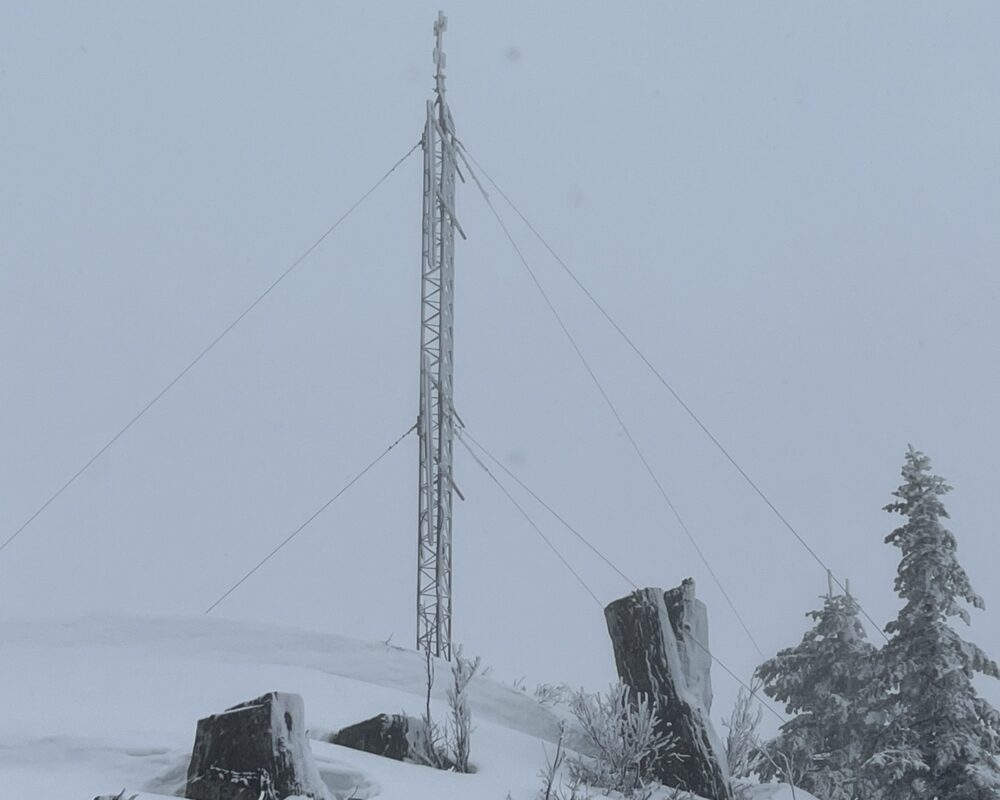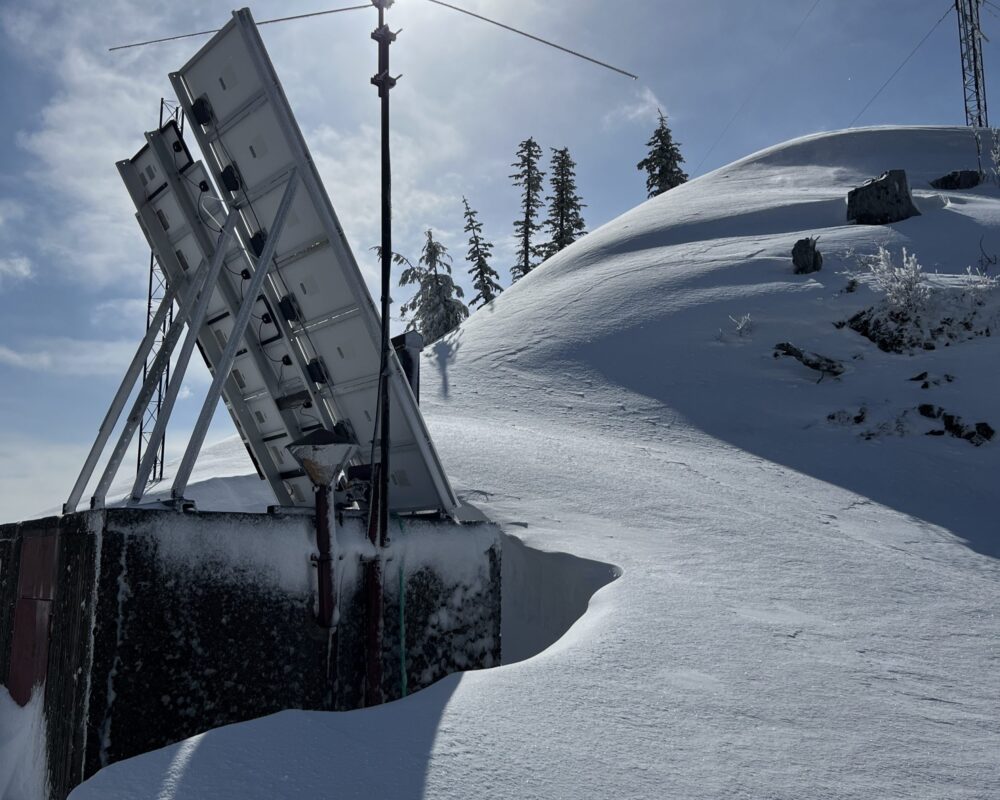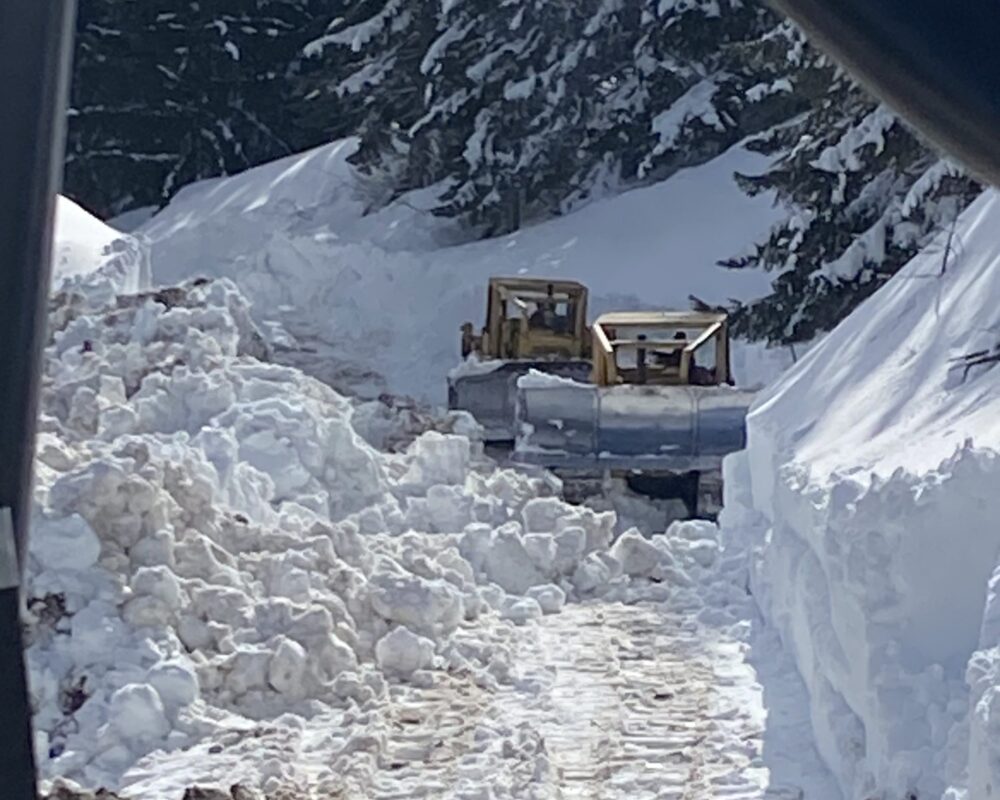Communicating with others is an essential part of our daily routine, and most of us rely on cell phones for this purpose. But what do you do when there are no more bars of service?
At Freres Engineered Wood, we have been prepared for situations like this, and we operate a Low-Band VHF radio system that has proven to be invaluable to our operations.
Our Low-Band VHF radio system has been in operation long before cell phones became commonplace. We have been licensed by the Federal Communications Commission (FCC) to use this system to provide wireless communication for our timber management, road building, harvest, and hauling operations. This system is not only important for dispatching log trucks in our daily operations but is also critical in case of an emergency, such as an injury or fire. We often refer to this system as our “Company Radio.”

These two-way radios are installed in our log trucks, pickups, road building equipment, contract loggers’ equipment, and several company offices. These radios function similarly to the Low-band UHF plant radios used to communicate throughout our plants every day. However, there are some differences between the two.
The term “Low-Band VHF” refers to the frequency of the radio wave. Our Low Band Very High Frequency operates approximately 50 MHz (or 6-meter wavelength), while our Low Band Ultra High Frequency operates approximately 450 MHz (or .66-meter wavelength). The lower frequency of VHF provides better coverage for hills, canyons, and longer distances than UHF. However, UHF works better in, out, and through buildings, and there is more bandwidth available for separate frequencies. Additionally, the Low-Band system requires larger antenna systems to function correctly.

One of the critical components of our Low-Band VHF radio system is the radio repeater. This device combines a receiver and transmitter operating on separate frequencies, allowing our mobile units to transmit and receive on different frequencies. When an operator speaks into the microphone, the mobile unit transmits on the same frequency that the repeater receives. The repeater then re-broadcasts on the same frequency that our mobile unit receives, providing an extended coverage area.
Our radio repeater is located in a critical area, 15 miles southeast of Lyons, at an elevation of 4400 feet. This high point is near the line-of-sight of Lyons, allowing the repeater to receive a signal from one canyon and broadcast it throughout the surrounding area. The combination of our repeater location and the Low-Band VHF system provides excellent coverage in many areas of our forest operations on the east side of the Willamette Valley, as well as some areas on the west side of the valley.
As for electrical power, our repeater relies solely on solar power and a large battery bank. While this power source has generally functioned well since the 1990s, there have been some challenges during severe winters. In one instance, our radio went down because of a lack of charge on the batteries due to too many days with snow on the panels and cloudy skies. Some of the snow drifts were more than twelve feet deep. Our crew utilized our D7G and D8H Cat Dozers, as well as our all-wheel drive Cat 150 motor grader, to open the road to provide access to the repeater. Once we were able to get on site, we set up generators combined with battery chargers to bring the charge level back up in the large bank of batteries.

To prevent such situations from occurring in the future, we are exploring various solutions, including upgrading our solar system or installing a backup generator. Our Low-Band VHF radio system has been an essential tool for our forest operations, and we remain committed to maintaining it to ensure continued connectivity in remote areas, particularly in the scenic Santiam Canyon of Oregon.
Subscribe
We’ll send you a notification when a new story has been posted. It’s the easiest way to stay in the know.